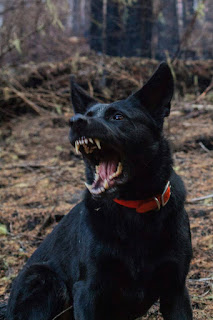Training with Heart: Embracing Presence and Compassion in Positive Dog Training
In the realm of dog training, being present isn't just about physically showing up; it's about immersing ourselves in the shared experience with our four-legged companions. Picture this: you and your dog, fully tuned in to each other's energy, navigating the training session with a shared focus. Inspired by the teachings of Ram Dass, who emphasized the profound impact of living in the present moment, I've come to understand that this presence goes beyond the surface – it's a state of mindful connection, a dance of energies that transcends mere cues and behaviors.
Think of your dog as a sensitive soul navigating a world filled with stimuli. Compassionate training provides them with a safe harbor, a place where trust blossoms. As we show understanding and kindness, our dogs learn that training is not a series of tests but a collaborative journey. This sense of security becomes the foundation upon which we build a resilient relationship.
Let's delve into the practical side of things – mindful techniques that you can bring to your training sessions. The practices of incorporating intentional breaths, establishing eye contact, or simply being attuned to your dog's natural behaviors – these techniques form the building blocks of a mindful training approach. I want to co-create an experience where both trainer and dog are comfortable and relaxed in the present moment.
Moreover, being present and relaxed facilitates the cultivation of patience. Patience, in turn, becomes the antidote to sinking into frustration. When we approach training with a patient mindset, we allow the process to unfold naturally, understanding that each dog has their own pace of learning and adapting. The more patient we are, the more we can appreciate the progress, no matter how small, and foster an environment of positivity and encouragement.
However, no matter how much I practice mindfulness in training, it's crucial to recognize that the memory of past trauma will linger on, shaping the reactions and behaviors of our canine companions. I've come to understand that expecting a dog to magically erase the scars of their past is unrealistic. Dogs, much like us, carry the imprints of their experiences, and it's essential to approach their reactive moments with empathy and understanding.
As a trainer, I've grappled with my own emotions when faced with a dog's intense reactions rooted in past trauma. It's easy to feel a surge of insecurity or frustration when faced with big emotions from dogs, but I've learned the importance of acknowledging and processing these emotions. By releasing my attachment to a specific outcome, I create space for a more compassionate response to the dog's needs. It's a continual practice of self-awareness, fostering an environment where both trainer and dog can navigate the complexities of reactivity to the best of our abilities.
In these challenging moments, the power of presence becomes a guiding light. Instead of succumbing to frustration or getting stuck on an outcome, I strive to meet dogs where they are emotionally. This means embracing their big feelings without judgment, providing a steady presence that communicates understanding and support. It's a journey of empathy, a commitment to being okay with where we are both at in the present moment, and by doing this, we can create a space where healing and growth can unfold organically.
In wrapping up this discussion on mindful dog training, I want to acknowledge the valuable assistance of ChatGPT in refining my thoughts. With this tool's help, I look forward to sharing my insights more regularly. Thanks, ChatGPT, for being a helpful partner in this writing process.



Comments
Post a Comment